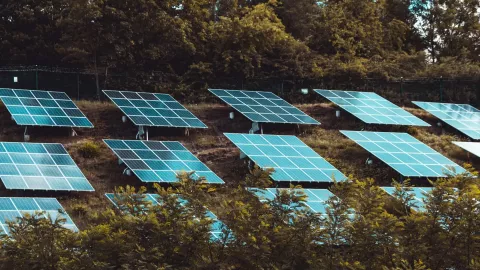Energy Efficiency: doing more with less
In an ever-changing world, Energy Efficiency is the easiest way to reduce pollutant emissions and limit the rise in global temperature. Doing more with less energy, with new technologies and resources used efficiently, helps the planet and enables consumers and businesses to achieve greater energy savings.
For centuries, mankind treated the available natural resources as if they were a trivial thing. Industrial and technological progress has been necessary for societies to develop and evolve, but has put the planet under environmental challenges that need to be overcome and paths that we need to reverse.
The increase in Greenhouse Gas (GHG) emissions, deforestation and pollution paved the way for Climate Change and imbalances in ecosystems. If we want a healthier world for future generations, and in order to comply with the Paris Agreement, Energy Efficiency must represent 37% of the reduction in CO2 emissions by 2040.
Doing more with less
Being efficient does not mean, necessarily, reducing consumption or production in general in order to pollute less. It means improving production and making consumption decisions in a more conscious way. Using natural resources sustainably and consuming energy more efficiently allows citizens and businesses to save and reduce GHG emissions while maintaining the same quality of life and economic growth.
Energy is necessary for everything - be it fuels or electricity -, from a simple electric bulb or a toaster, to a modern computer or smartphone; from a small air conditioner to a huge industrial machine; from the automobile of a family to an enormous cargo ship or an international passenger train. Energy consumption, which we sometimes ignore on daily life, if not done efficiently, creates pollution and, equally important, waste.
How do we achieve Energy Efficiency?
The path to Energy Efficiency is made of small and large measures, at the level of companies and industries, transport, housing, governments, and, of course, the energy industry itself. Measures such as:
- Reducing the use of natural fossil resources to produce the same amount of electricity, or even more (replacing coal or fossil fuels with units powered by renewable energies);
- Decreasing energy expenditure to manufacture a given product;
- Implementing systems that support and foster Energy Efficiency;
- Making investments in buildings, either by solving existing problems, or by ensuring that the new buildings are energetically efficient at the level of materials and construction itself (this is particularly important if we take into account that according to ERSE, the buildings were responsible for 40% of energy consumption all over Europe);
- Promoting energy, business and home audits and checks;
- Using energy and water in a restricted and balanced way;
- Promoting Energy Efficiency literacy;
- Expanding the service life of each appliance through regular maintenance;
- Buying efficient and intelligent household appliances, which translate into energy savings and smaller costs;
- Using more efficient means of transport, such as electric vehicles, instead of those with combustion engines.
All of these contribute to the reduction of energy consumption and, consequently, allow consumers to save money. However, it also reduces the import of energy, ensures a more stable and secure supply, contributes to a decrease in GHG emissions and to the decarbonization of society and the economy, with direct effects on the environment and the climate.
Examples to follow
Some countries are great examples to be followed regarding energy efficiency. According to a study by the American Council for an Efficient Energy Economy (ACEEE), this is the Top 5:
- Germany. It stands out on ACEEE's list for having a national plan dedicated to energy efficiency since 2014, by mobilizing investment for the renovation of buildings and transport and by identifying sustainable business models. The country also had the largest number of facilities certified by the ISO 50001 energy standard.
- Italy. The transalpine country has invested a lot in energy efficiency in its transportation systems, particularly rail. For each euro spent in the road sector, 1.23 euros were invested in railway facilities. Intelligent logistics, through the Lean & Green European program, was one of the means of this strategy.
- France. A law created in 2015 requires the reduction of final energy consumption by 50% until 2050. At the same time, the French government announced, in 2018, a renovation project of 500,000 houses per year, and intended to demand the owners of commercial buildings a "renovation plan" to reduce energy consumption by 25%.
- United Kingdom. Besides having made several commitments in terms of energy efficiency, the country already has very efficient thermoelectric plants and has increasingly invested in efficiency and Research and Development programs.
- Japan. It was one of the pioneers in the creation of laws for the rational use of energy, early in 1978. It requires companies to appoint an energy manager and to communicate its consumption annually. In the last decade, several business Energy Efficiency targets have been implemented through tax incentives.
Energy Efficiency should be everybody's concern: the family who decides to change the home light bulbs or choses a more efficient appliance, and the large company that renews its fleet with less polluting vehicles or that replaces the air-conditioning system in a building several storeys high Energy Efficiency is one of the first steps towards a more sustainable future.

